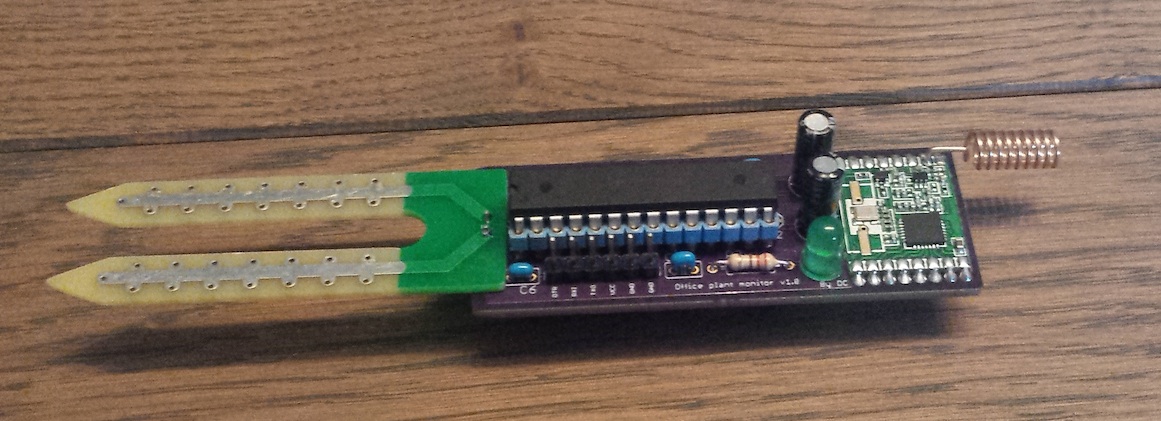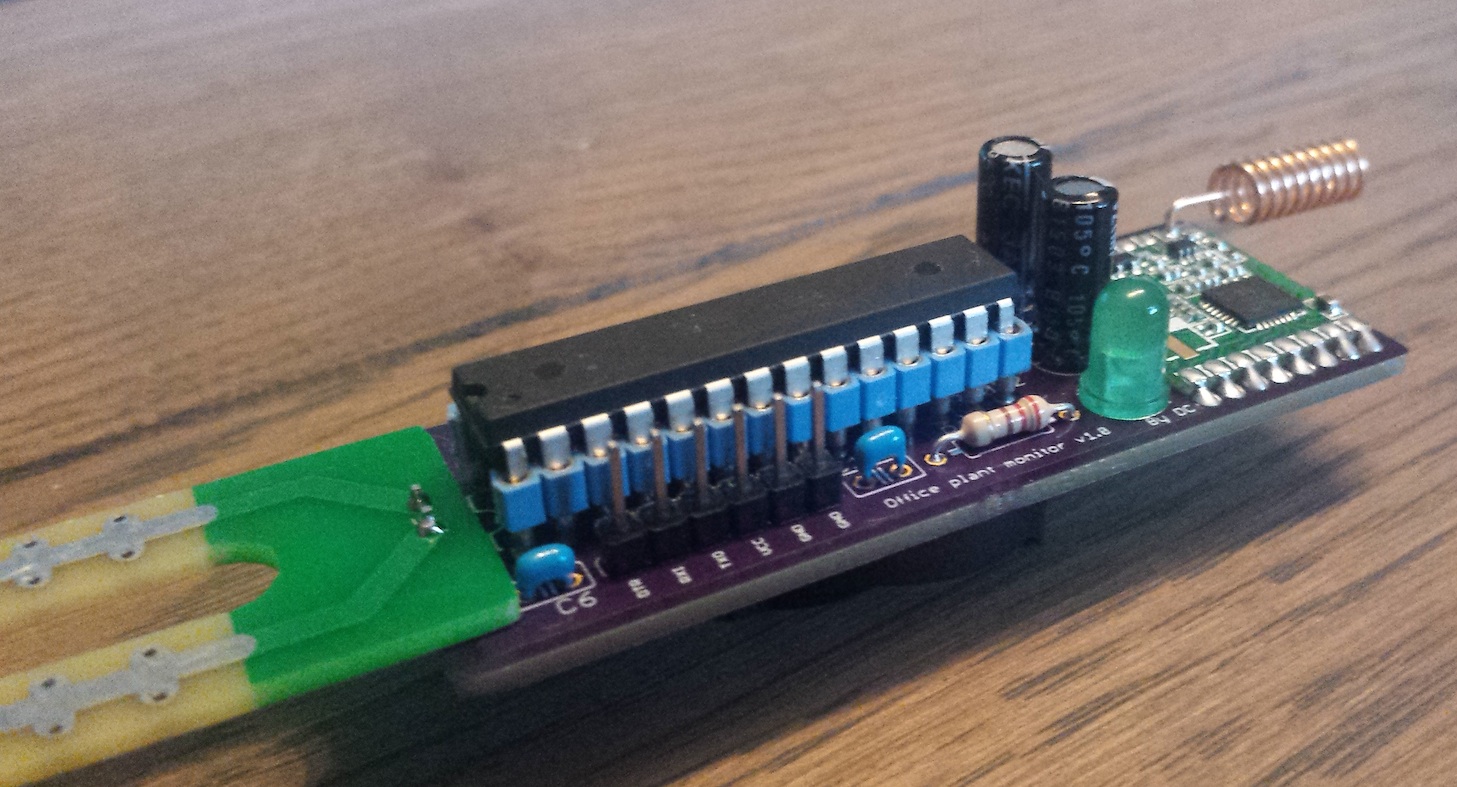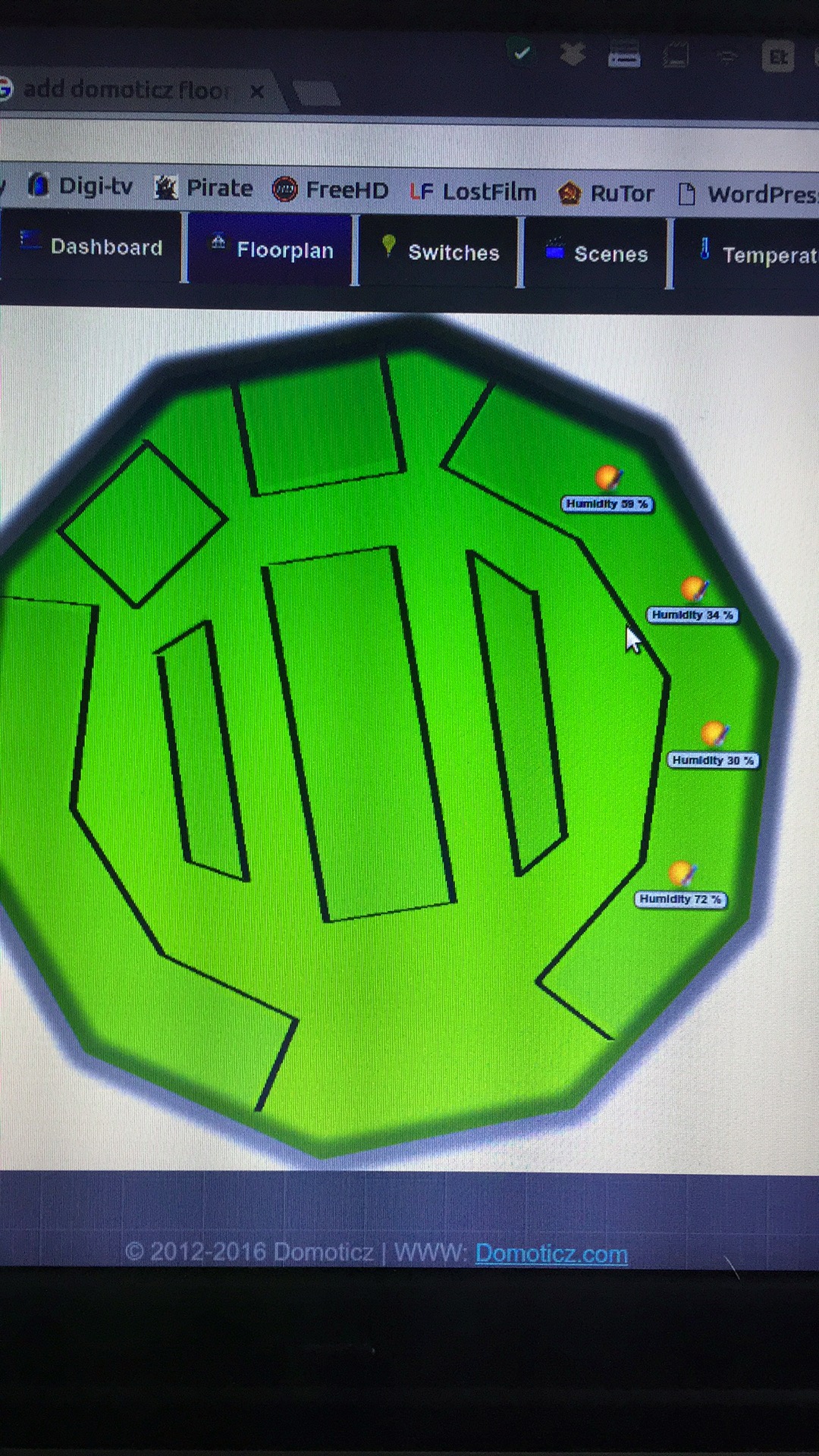Office plant monitoring
-
Thought I would throw this in the pot
Why not change the sensor Probe ?? no credit to me , just was googleing as you do,
Home made sensors I think less prone to corrosion
here's the linkhttp://www.cheapvegetablegardener.com/how-to-make-cheap-soil-moisture-sensor-2/
Had some seeds from very tasty tomatoes last year ,have planted and this year growing like tiffids !!
Getting quite big so have move from kitchen to Greenhouse ASP really
Will try with this type of sensor -
Thought I would throw this in the pot
Why not change the sensor Probe ?? no credit to me , just was googleing as you do,
Home made sensors I think less prone to corrosion
here's the linkhttp://www.cheapvegetablegardener.com/how-to-make-cheap-soil-moisture-sensor-2/
Had some seeds from very tasty tomatoes last year ,have planted and this year growing like tiffids !!
Getting quite big so have move from kitchen to Greenhouse ASP really
Will try with this type of sensor -
I build moisture sensors from stainless wire. If this in pot at a depth of 1 inch domoticz reported 83% of moistre level.Real plant was dry and needed watering. I put moisture level on the soil

and sensor reported moisture level 43%. I test and put moisture sensor to the soil at depth 1 inch

Sensor reported moisture level 96%.
-
Hello,
After several weeks I finally succeed to create a dedicated PCB ! It was started yesterday evening and works fine.
Some pictures:



Measure is reported each two hours. So I expect more than two years on a CR2032 (using @GertSanders firmware).
I can off course provide any information as PCB.
Thanks @mfalkvidd for the idea and the code. The project is now WAF ;)
David.
-
Is it possible to purchase it somewhere? :)
-
@Fat-Fly
I have sensors that report 25-35% and they are still not dry.
I water for 10-20 min and they report 40%, sometimes 45%. But I know that when they report 25% it starts to be time to water.@flopp the level reported will depend on the following things (maybe more):
- the pullup resistor - varies between different arduinos
- the soil composition - varies between different pots
- the temperature - varies throughout the day
That means it is impossible to compare readings from two different Arduinos in the same pot and it is impossible to compare readings from different pots using the same Arduino.
-
@flopp the level reported will depend on the following things (maybe more):
- the pullup resistor - varies between different arduinos
- the soil composition - varies between different pots
- the temperature - varies throughout the day
That means it is impossible to compare readings from two different Arduinos in the same pot and it is impossible to compare readings from different pots using the same Arduino.
@mfalkvidd
Thanks -
-
This sort of sensor is not good, because the electrolyticeffect.
You always should use soil sensors, which are based on the capacitive effect.Like this one:
https://forum.mysensors.org/topic/4474/capacitive-soilsensor-for-measurement-the-humidity-of-flowersBest regards,
NetRap -
This sort of sensor is not good, because the electrolyticeffect.
You always should use soil sensors, which are based on the capacitive effect.Like this one:
https://forum.mysensors.org/topic/4474/capacitive-soilsensor-for-measurement-the-humidity-of-flowersBest regards,
NetRap -
The problem is, that your design is based on conductivity.
This means, that the electrodes will be destroyed over time
and the produced metal salts are in your flower,garden,...I don't will have metal salts in my tomatoes !!! ;-)
@NetRap I doubt that one second of 3V electric power every hour (0.03% duty cycle) will produce measurable amount of salt but yes, for food production capacitive measurements are probably better. The topic of this thread is "office plant monitoring" though and I hope you don't have to live off your office plants :)
-
"Metal salts" doesn't sound very dangerous unless you're more specific. I prefer some NaCl on my tomatoes.
How about some gold- or silver plated electrodes if you're of the worrying kind?

